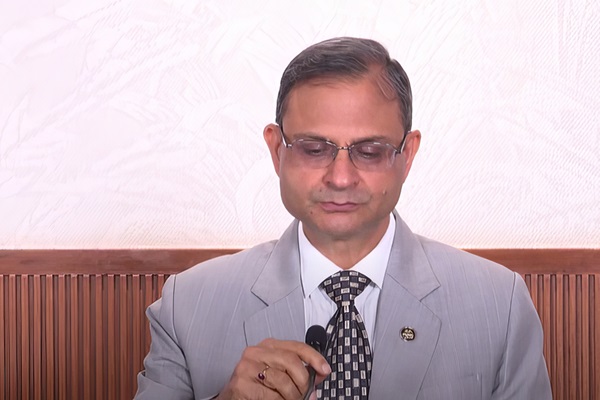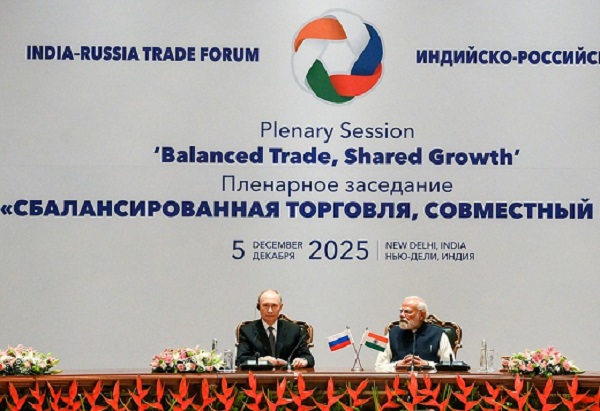.png)

Groupthink is the House View of BasisPoint’s in-house columnists.
August 12, 2025 at 9:36 AM IST
For a central bank governor, words are not just commentary. They are part of the policymaking process, with the potential to influence public sentiment, market pricing, political positioning, and even regulatory expectations. Sanjay Malhotra’s tenure so far has been marked by a willingness to engage directly with the media and explain policy decisions in detail.
That candour has its benefits, but it also carries risks when tone and context are not perfectly aligned with the audience. Two recent episodes, one involving a private bank’s charges and the other India’s most ubiquitous payment system, underline the fine balance between speaking plainly and signalling policy.
ICICI Bank’s decision to raise the minimum average monthly balance for new accounts opened after August 1 to ₹50,000 sparked predictable outrage online. Much of the anger was directed not only at the bank but also at the Reserve Bank of India, the regulator. On the sidelines of an event, Malhotra was asked about it this week.
His response was factually precise: such charges are not within the RBI’s regulatory remit, so the central bank does not intervene. He also noted that other banks have scrapped such requirements altogether. That second point, which offered a measure of balance, was largely lost in the noise.
The headline that travelled was that the RBI governor was refusing to step in against what many saw as an anti-consumer move. In a matter of minutes, a comment grounded in regulatory reality was reframed as indifference to public concern.
A few weeks earlier, Malhotra had faced a similar storm over the Unified Payments Interface. At the post-Monetary Policy Committee press conference, he felt compelled to clarify that he had never said UPI would not remain free for customers.
The issue arose after remarks at a separate event in July, where he explained that while UPI is currently free for end users, the government subsidises the underlying cost. The phrasing, coupled with the context of an RBI committee’s earlier recommendation on payment charges, led to headlines suggesting that UPI would not be “free forever”. Social media amplified that reading, and political commentary quickly followed. In the end, the substance of his point, that every payment system has a cost, was overshadowed by the perception that a widely valued public service was under threat.
In both cases, Malhotra was factually correct. The RBI does not regulate minimum balance charges, and UPI’s operating costs are real. Yet the episodes demonstrate the distinctive pressures of central bank communication.
The same words that land without friction in a closed-door meeting of bankers or bureaucrats can be received very differently in the public arena, where emotional reactions often outrun nuance.
Just like his comments on monetary policy stance are dissected by the markets, his broader remarks also get scrutinised by the public. When the subject touches daily financial life, even a precise answer can set off waves of interpretation that the governor must then spend political and reputational capital to correct.
The RBI governorship is unlike any other public role. While ministers and bureaucrats also face media scrutiny, the central bank chief speaks into a hyper-sensitive environment. Every word is examined not just for what it says but for what it might imply about future policy. Markets, banks, investors, and households listen at once, and each group filters the message through its own interests. An observation about costs can be taken as a policy signal; a procedural clarification can be read as a stance on fairness or consumer rights. Even when markets remain calm, political narratives can gain traction in ways that complicate the RBI’s own messaging.
Malhotra’s broader record shows he is acutely aware of communication as a policy tool. He has been clear about what different policy stances mean in practice, foreshadowed regulatory timelines so that markets can adjust smoothly, and explained the intent behind complex changes such as the liquidity framework review.
He has shown an openness to engage with journalists that contrasts with the more reserved style of some of his predecessors. These are significant strengths in a role where credibility and transparency underpin market stability.
The challenge is not to abandon that openness but to recalibrate it for contexts where the audience is less technical and more emotionally invested. That can mean leading with empathy before explaining legal or regulatory boundaries, or framing factual clarifications in terms that pre-empt obvious misreadings.
It can also mean recognising when to defer comment entirely until a fuller, prepared explanation can be offered. The skill lies in preserving candour without inviting unnecessary misinterpretation.
Every central banker learns that language is an instrument of policy. For a governor who values clarity, the real test is in balancing precision with perception. Malhotra has so far been able to course-correct quickly when words have been misconstrued. The risk is that in an age of instant headlines and viral clips, the window for correction can close before the damage is undone. That makes the discipline of message control as essential to the RBI’s credibility as the policy decisions themselves.
In the end, markets and the public will judge a governor not just by the rates set or regulations issued but by the steadiness of the voice that delivers them. Malhotra has the advantage of a clear voice. The next step is ensuring that it carries exactly the message he intends, and nothing more.




